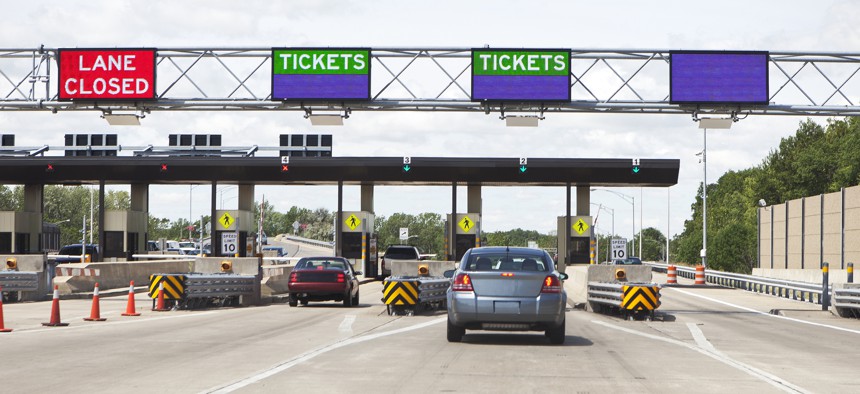Intelligent transportation management alleviates congestion

William Andrew/Getty Images
Rather than expanding highways in response to traffic congestion, communities can more efficiently manage their roadways with integrated insights from partner agencies, automated vehicles and navigation systems.
Traffic congestion is driving growth in the intelligent transportation systems and services (ITSS) market, particularly in urban areas, according to a new market research report.
ITSS encompasses the sensing, analysis and control systems that improve the efficiency of highway and transit systems. Used to help reduce fuel consumption and travel delays, ITSS has many applications, including parking management, electronic toll collection and road safety -- but the biggest is road traffic management, the report states. An increase in populations and the number of vehicles plus limited options for expanding roads in metropolitan areas are driving this trend.
In fact, use of ITSS can prove a more effective use of tax dollars than expanding highways, said Josh Johnson, director of the Critical Systems Department in the Southwest Research Institute’s Intelligent Systems Division.
“It’s about $2 million to build 1 lane mile of expressway in a city,” Johnson said. If ITSS help “find that accident and get it off the road quickly, you don’t have to build as much roadway…. [It] becomes cheaper to pay for the technology and the operations involved in managing the freeways more efficiently than it is to build more freeways.”
Use of ITSS in advanced public transportation systems is also growing, according to the report, which cited the increasing installation of automotive telematics systems, electronic fare payment systems and dynamic sign boards.
ITSS comes down to three main areas, Johnson said: freeway management, arterial management and transit agencies that operate buses and subways. Most agencies that handle those elements have become adept at using technologies and managing their own networks. For instance, a transportation department is good at handling freeway operations, while a municipality’s signal entity manages arterial roadways in urban areas.
“The opportunity coming up now is how do they work together,” Johnson said. “Let’s say the freeway is shut down. How do I divert traffic onto arterial [roads] and maybe put more green time on the signals to push more cars through on that diversion route? I think the challenge is in how these different agencies … all work together, integrate their technology and their operations.”
Integrated Corridor Management is a nationwide initiative addressing this. Managed by the U.S. Transportation Department, its vision “is that transportation networks will realize significant improvements in the efficient movement of people and goods through institutional collaboration and aggressive, proactive integration of existing infrastructure along major corridors.”
Another opportunity lies in connected and automated vehicles, Johnson said, adding that there is a lot of value in getting data from them. Manufacturers know where the vehicles are because they track them for maintenance and safety purposes, which means cities and states don’t need road or roadside sensors to collect information; they can get it directly from the manufacturers and share it back with drivers. For instance, road managers can alert drivers that they’re approaching an accident, giving them a chance to divert before adding to congestion.
“You can’t stop an accident from happening, but if people are aware there’s an accident ahead and they see those messages on the [variable-message] signs … you can reduce what they call secondary accidents,” Johnson said.
A third market segment poised for growth is advanced vehicle information systems, such as navigation devices. The market is mature in the United States and is expected to grow along with highway and expressway projects, the report states.
The larger states and urban areas are moving on ITSS, Johnson said, but smaller locations that may be struggling to start should consider teaming up with local transportation department partners to share data. Additionally, they should look for opportunities to work together and be open to cloud-based technology, which facilitates technological interoperability and data-sharing.
“I think that’s the beauty of these cloud systems now [is] an ability to share data more readily. There’s value and benefit in the data these different agencies have, and data becomes a commodity,” he said.
Stephanie Kanowitz is a freelance writer based in northern Virginia.





